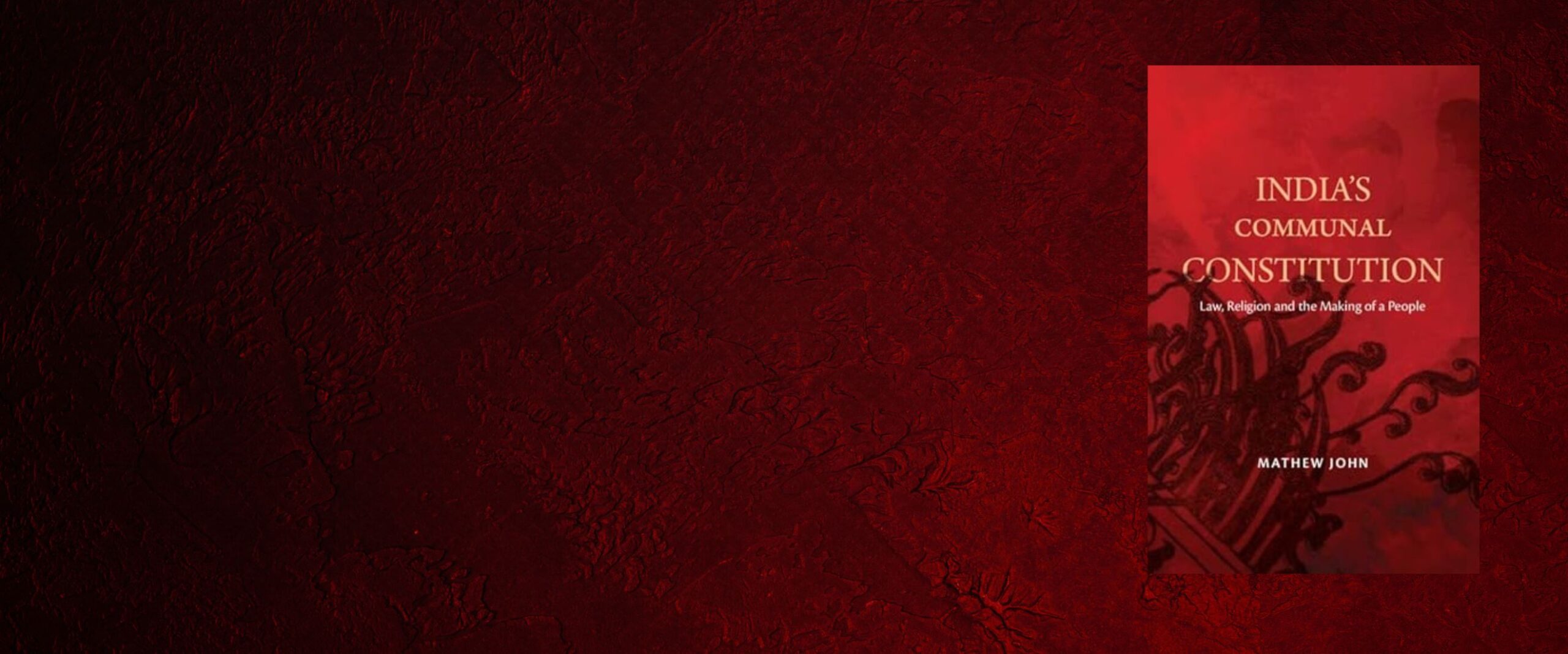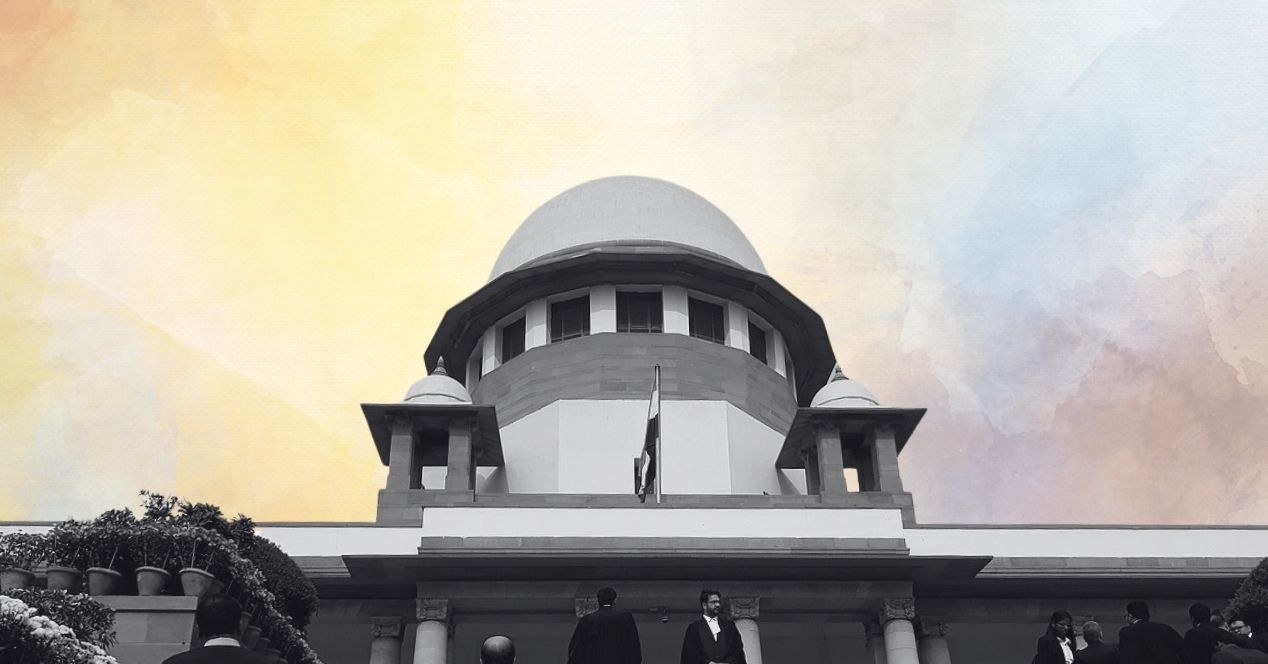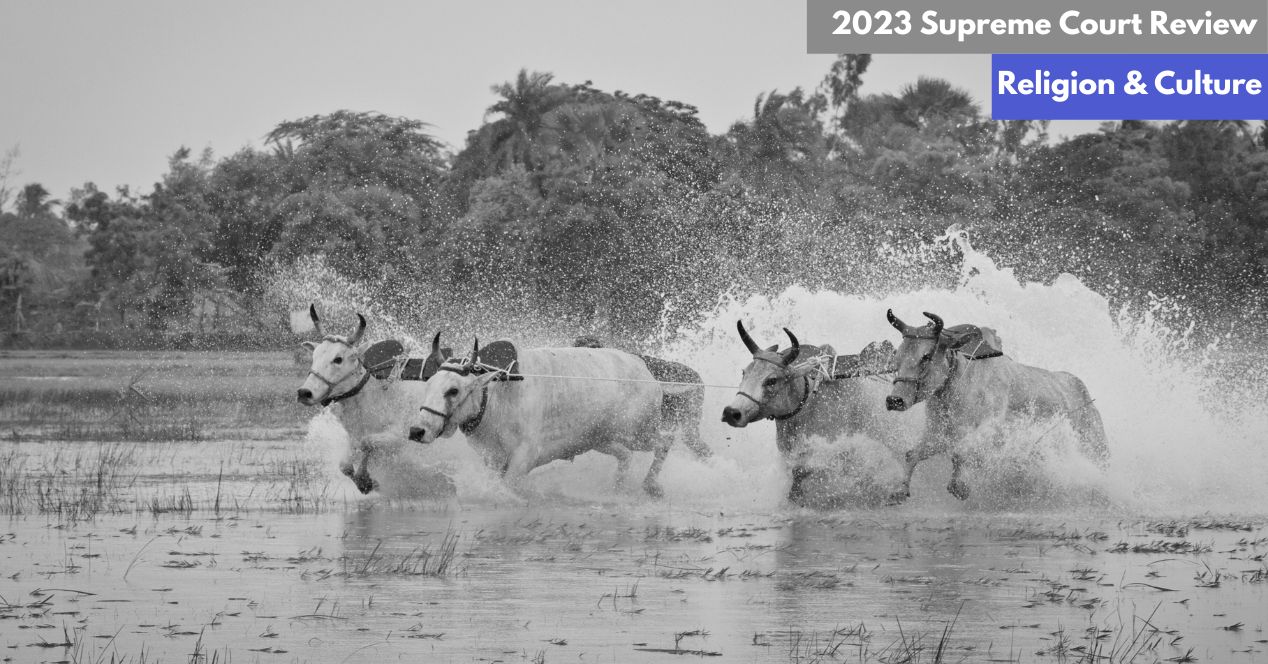Analysis
“In choosing the essential practices test, Indian courts have shaded out alternative doctrinal approaches”: Mathew John
The author of ‘India’s Communal Constitution’ on the balance between individual rights, religious identities and the Uniform Civil Code

Dr. Mathew John is a professor of law at Jindal Global Law School. He is a graduate of the National Law School, Bangalore and the University of Warwick, and has completed his doctoral work at the London School of Economics on the impact of secularism on Indian constitutional practice.
His recent book India’s Communal Constitution: Law, Religion and the Making of a People seeks to demonstrate the tendency of the Constitution to identify the people of India in religious terms despite the Constitution’s largely liberal design and practice. To argue its case, the book draws on debates on religious freedom, personal law, minority rights, and the identification of caste groups.
John also sketches out the evolution of the Essential Religious Practices (ERP) doctrine, which he argues sits “uneasily within the normative structure of the Indian Constitution.” On the Uniform Civil Code, he suggests that little has been done to secure the constitutional aspiration, and expresses doubt about whether the UCC can tide over the communal identities crystallised by personal law.
In an emailed response to questions posed by Supreme Court Observer, John touched upon various aspects of his book. Here are edited excerpts:
Why did you choose the term “communal” to describe the Indian Constitution, and how does it reflect the reality of its practice? Why is it problematic to have a Constitution that reflects certain communal identities of people, given that we have a diverse population—communally, socially and religiously?
The term ‘communal’ draws from the constituent vocabulary of the British colonial state that the Indian people were to be understood as a collection of antagonistic communities styled Hindu, Muslim, Christian, and so on. Eventually, they came to believe that these social divisions came in the way of the possibility of a unified Indian political will, a belief and judgement that had important consequences for the constitutional history of South Asia. I have described the crystallisation of this constituent vocabulary through discussions around rules and regulations that developed through the colonial state’s response to toleration, social reform, and representation which are detailed in the introductory chapter.
The Indian constitutional project was, by and large, a negation of the communal constitutional imagination that defined the colonial state and its understanding of the Indian people. That is, as numerous scholars have pointed out, the Indian Constitution is best understood as a liberal compact of individual citizens. Nonetheless, it is the case of my book that elements of the earlier communal constitutional imagination of the colonial state also continue into the organisation and the practice of the Indian Constitution.
The challenge that a communal constitutional imagination poses is the manner in which it is given to presuming a political community divided into friends and enemies, us and them, insiders and outsiders, and so on. This constitutional imagination committed to sharply demarcating political identity would pose challenges to forging an inclusive political community in any part of the modern world but especially in profoundly diverse societies like India.
Sabarimala, the ex-communication of Dawoodi Bohras, and Parsi women’s right to enter a fire temple—all these matters are pending before the Supreme Court. What’s your opinion about the balance the Court should strike between the rights of persons under Article 25 and the rights of religious denominations under Article 26?
The form in which my book speaks to the problem posed by these cases is elaborated through the discussion of the essential practices test in Chapter 1. The chapter discusses the Sabarimala case in detail to demonstrate the manner in which the essential practices test as mediating doctrine eclipses other forms of adjudicating the scope of religious freedom.
As the chapter recounts, the essential practices test as it is currently deployed commits the court to pronounce the essential features that make up a religious tradition. To the extent that the court determines the contours of a religious tradition or denomination, it abridges the autonomy of that tradition. However, and more importantly, my account of the essential practices test seeks to demonstrate that the test carries forward colonial and communal forms of characterising and representing the contours of religious traditions and the scope of their freedoms.
Further, I also show that in choosing the essential practices test as the doctrine mediating the scope of religious freedom, Indian courts shade out alternative doctrinal approaches that could take religious autonomy and perhaps the promise of a liberal political community more seriously.
You also speak about a shift in the approach of the Court from the Shirur Mutt case in 1954 to the 1960s. Earlier, there was a sense that the doctrines of each religion could dictate what was essential but that changed to a situation where the courts began to weigh in on essential practices. Why do you say that the line adopted by the Supreme Court presents an “incorrect account” of constitutional guarantees of religious freedom?
In making any observation about the adjudication of religious freedom, it is important to keep in mind that it is ultimately the court as an instrument of the state that is making a determination on how to draw the line between what is religious and what is not.
Further, it must also be noted that there are many doctrinal approaches to demarcating the scope of religious freedom. In this vein, it is possible to observe that the Indian Supreme Court itself has approached the essential practices test from various vantage points. Thus, before the imprint that Justice Gajendragadkar left on the adjudication of religious freedom in the Indian constitution, the Supreme Court understood essential practices to mean that courts ought to accept the claims of various religious traditions or denominations as far as might be possible within the framework of articles 25 and 26 of the Indian Constitution.
However, especially after Justice Gajendragadkar’s decision in the Ajmer Dargah case, the power of the Supreme Court expanded to decide what part of a religious denomination was truly essential to it, and what part might be designated to be a superstitious accretion. Now granting that courts will always perform the role of policing the boundary between what is religious, and what is not, this specific form of demarcating essential religious freedom seems to undermine the autonomy of communities in shaping the essential features of their religious practices.
It is not possible to detail this any further in this short response, but even recognising that the Indian Constitution does contemplate a significant role for state intervention in reforming the ethical aspects of religious denominations, it would seem odd that a Constitution committed to granting religious freedom would also permit courts to act almost as theologians in demarcating the scope of religious freedom.
In this context, you speak about the State’s obligation to demarcate or draw boundaries between religious freedom and the legally permissible bounds of state power. But if you look at something like the hijab ban in Karnataka, doesn’t giving the State the power to mark these boundaries threaten the right to freely profess, practice and propagate religion under Article 25(1)?
Striking the balance between contending values such as religious autonomy, the right to public goods such as education, and also the interest of the state in treating citizens equally is an important function that states and especially adjudicating courts must perform when drawing the boundaries on what must count as religious.
Therefore courts will always be involved in some form in defining the contours of religion. In doing so they may expand or constrain the scope of religious freedom. Consequently, without getting lost in doctrinal niceties, the answer to your question does seem tied to re-examining the specific autonomy-constraining twist that Justice Gajendragadkar breathed into the operation of the essential practices test as a form of demarcating the scope of religious freedom.
You point out the addendum in the Ram Janmabhoomi case as a stark example of how the religious practices doctrine has communally inflected the Indian constitutional identity. And the essential practices test continues to guide the Court in cases pertaining to religious freedom. So what is an alternative model for the Court to follow?
A way to think about this question would be to first examine the various ways in which Indians have bound themselves with Rama over millennia. As a civilisational ideal, Rama is an ethical metaphor that has been invoked in countless ways by all kinds of people in the Indian subcontinent and beyond.
At the same time as the emblem of an excluding nation, Rama is also mobilised as an icon that draws the boundary between one group of people understood as Hindu and others understood as Muslim, Christian and so on. To the extent that Rama and the essential practices test forms part of the story that my book narrates, I argue that the essential practices test is unable to draw on the civilisational pluralism associated with Rama and primarily identifies Rama as the emblem of one religious tradition to the exclusion of others.
The account that I sketch, in Chapter 1, as well as the book as a whole, underscores this communalising and perhaps even nationalising effect of the essential practices test. However, I do believe that there are many alternative ways in which courts can adjudicate disputes like that thrown up for resolution in the Ayodhya case.
Thus, the court could have just refused to address the question of essential practices and focus on questions related to property rights, res judicata and so on. Alternatively, the court could have chosen to emphasise other constitutional values like the obligation of the State to treat all parties equally when considering and adjudicating the claims over the disputed property. Thus, there are other possibilities if we are open to revisiting the centrality that we have come to grant the essential practices test.
While discussing the Uniform Civil Code (UCC), you say the courts have displayed an “exasperated” approach. You also suggest that there’s been a lack of progress and clarity on the UCC. In your view, is a UCC the solution to the communal identities enshrined in personal laws? What do you think the ideal UCC would entail?
The principal concern that my book notes in relation to personal laws is the role that it has played in firming up identities such as Hindu and Muslim which subsequently developed to become viable sources of communal and national mobilisation. Against this background, my mention of the UCC was to point to a site which ostensibly seems to promise an approach to family and personal law without the constraining silos of religious identity.
However, even as courts have demonstrated an eagerness to secure uniform, personal laws unconstrained by personal identities, they have on occasion been driven by an animus against specific religious groups like Muslims, which undermines the uniformity that they presumably seek to achieve. Therefore, I am not sure whether the UCC is necessarily a regulatory form that can eclipse the communal identities enshrined by personal law. However, the exact form that a regulatory framework like the UCC must take is a burden that my book has not carried.




